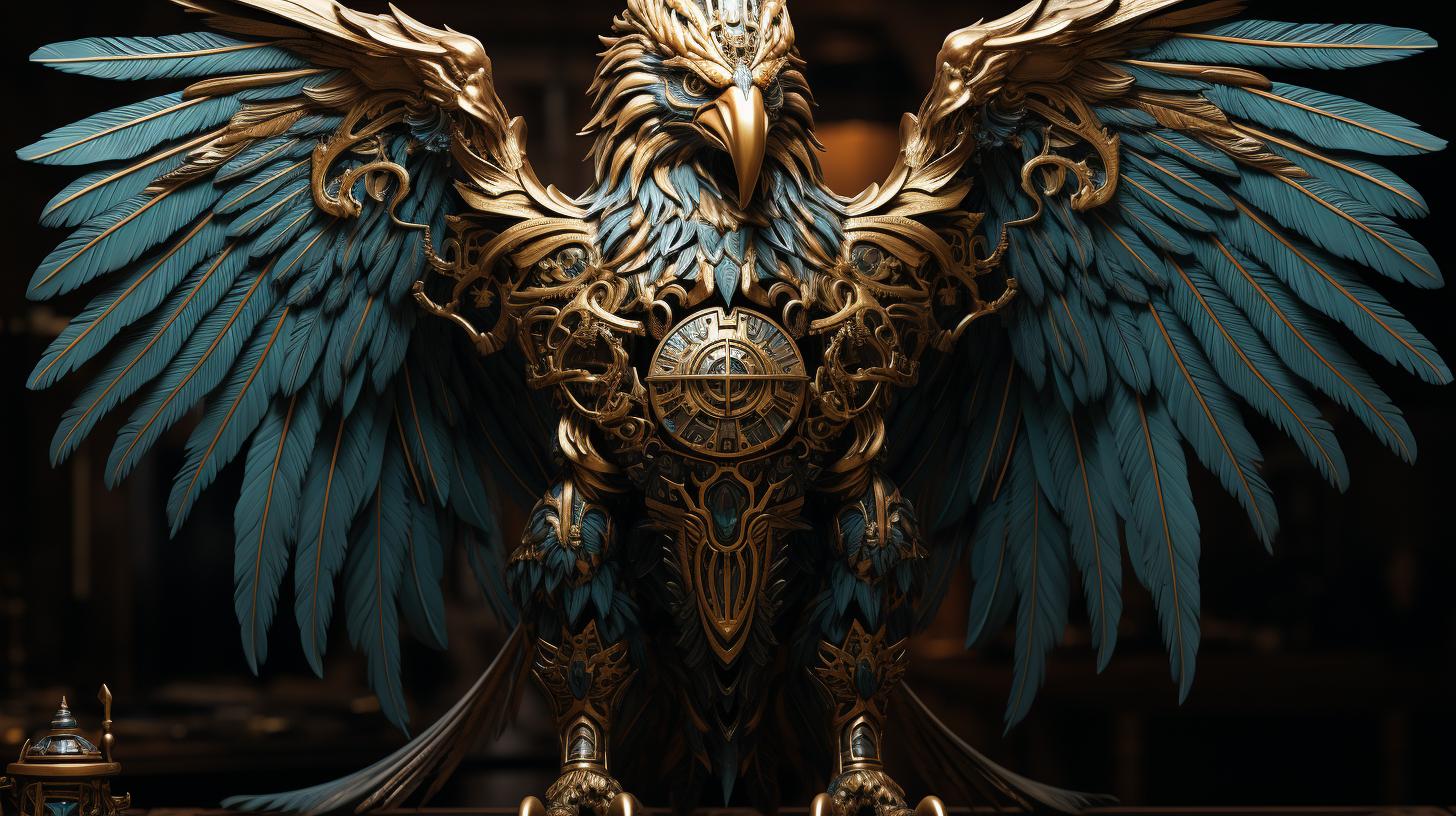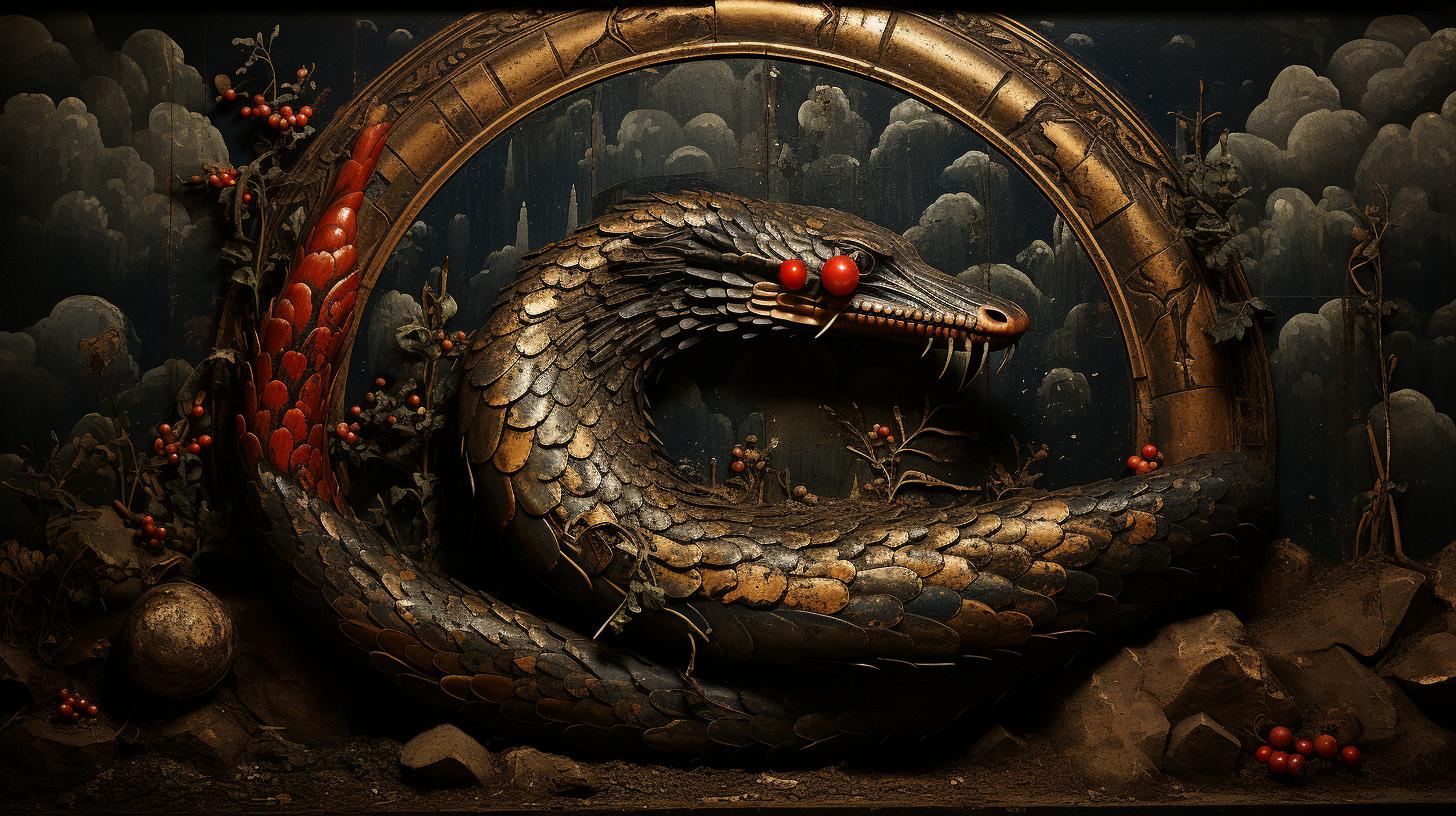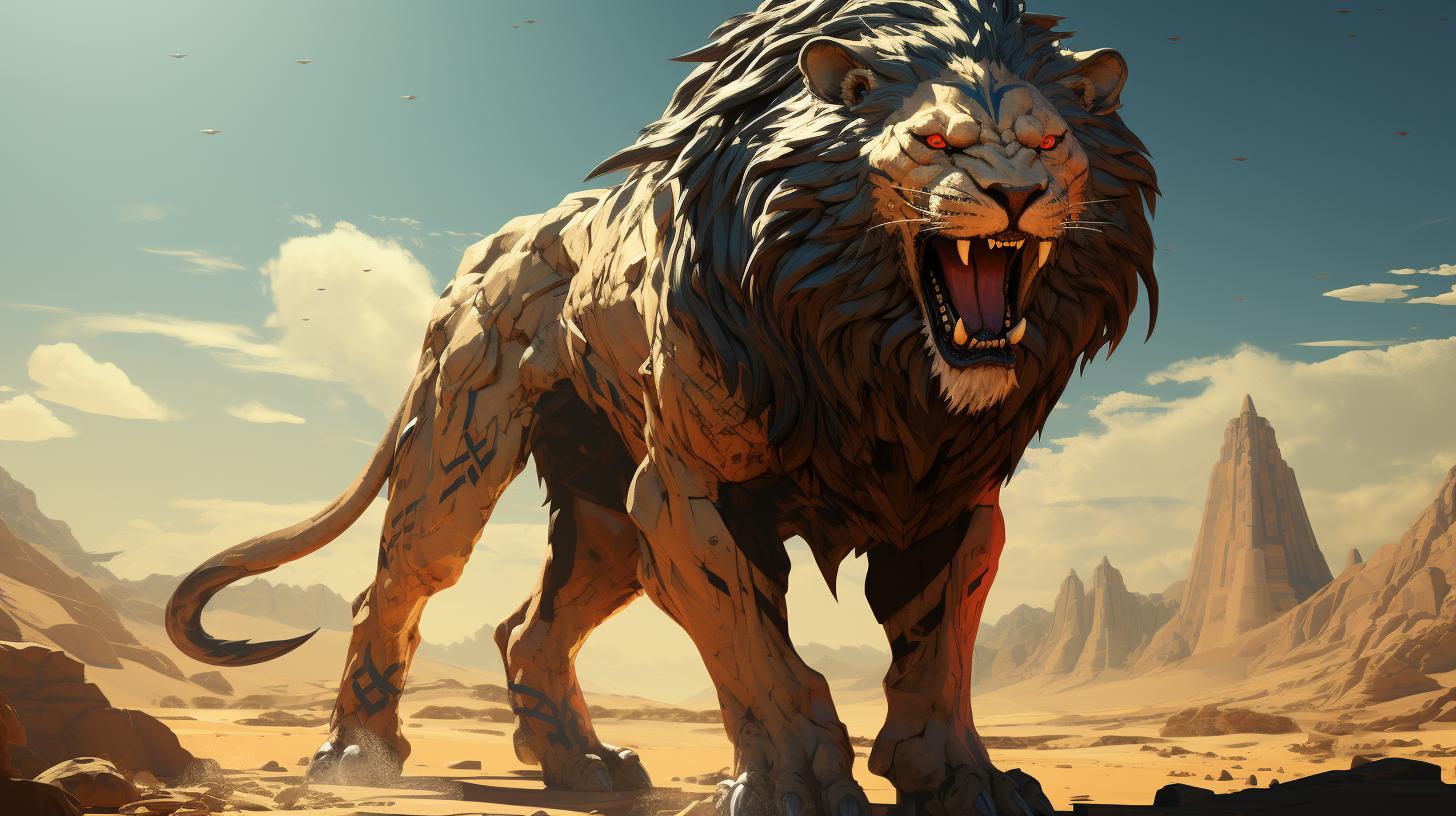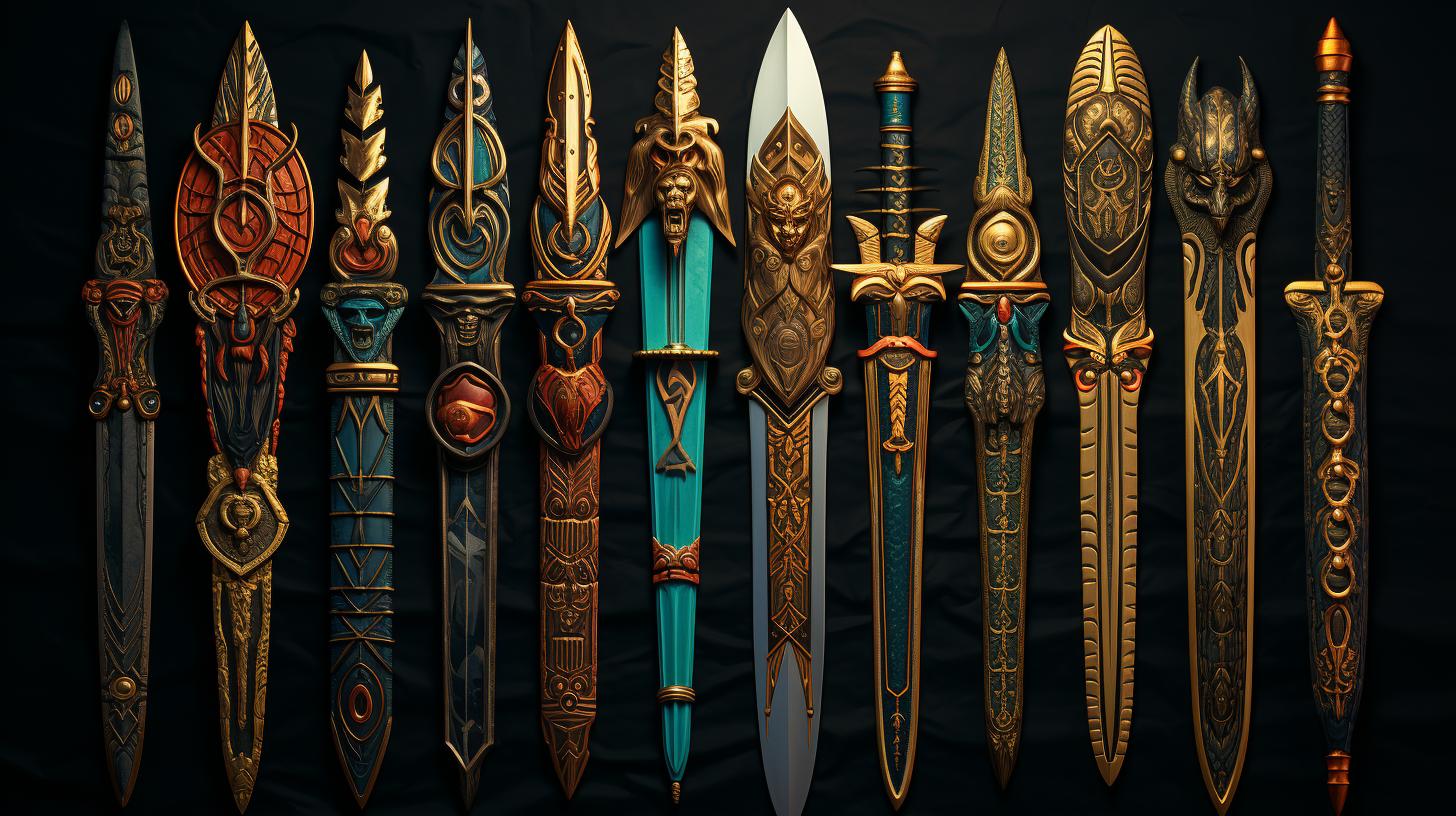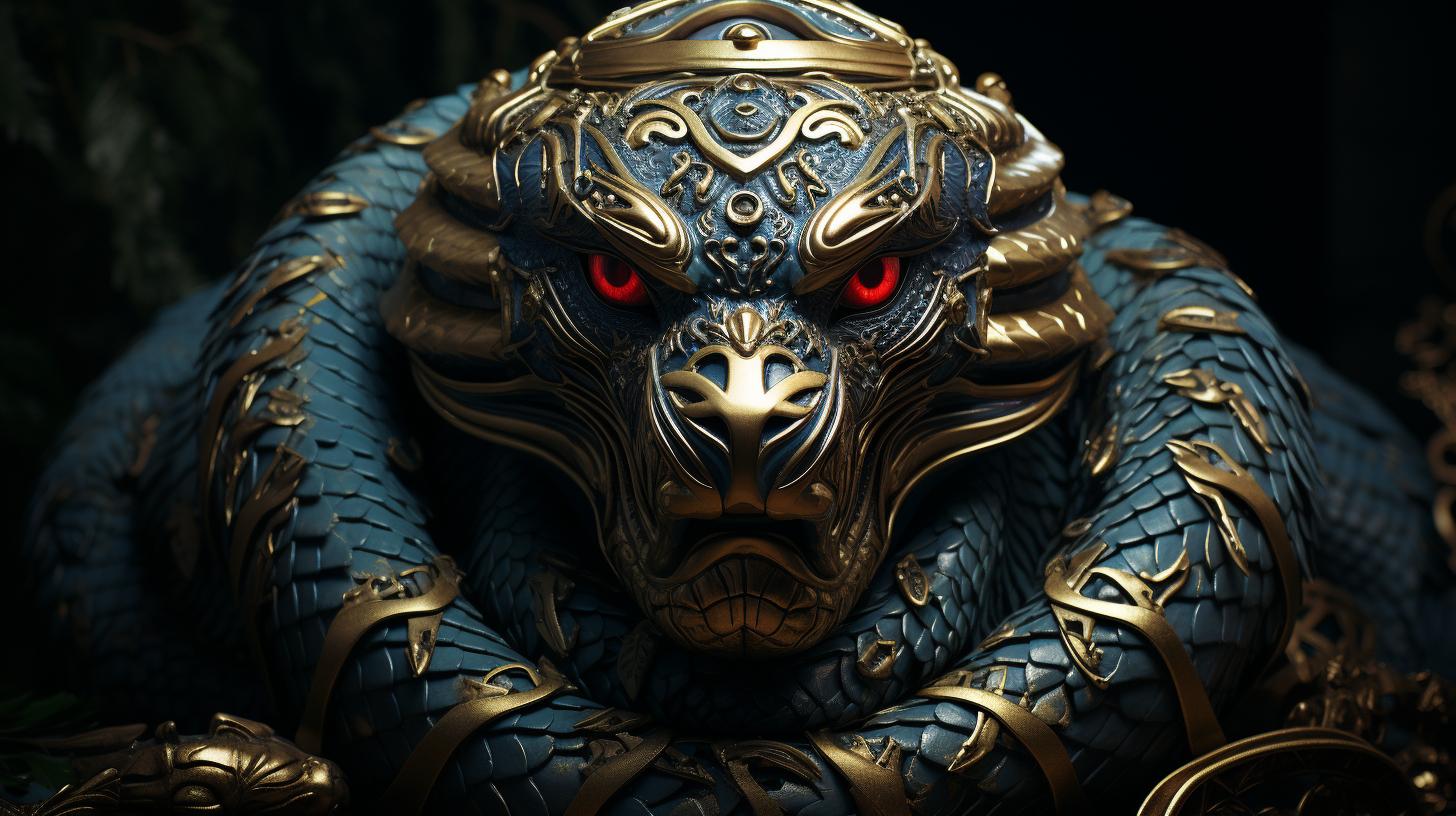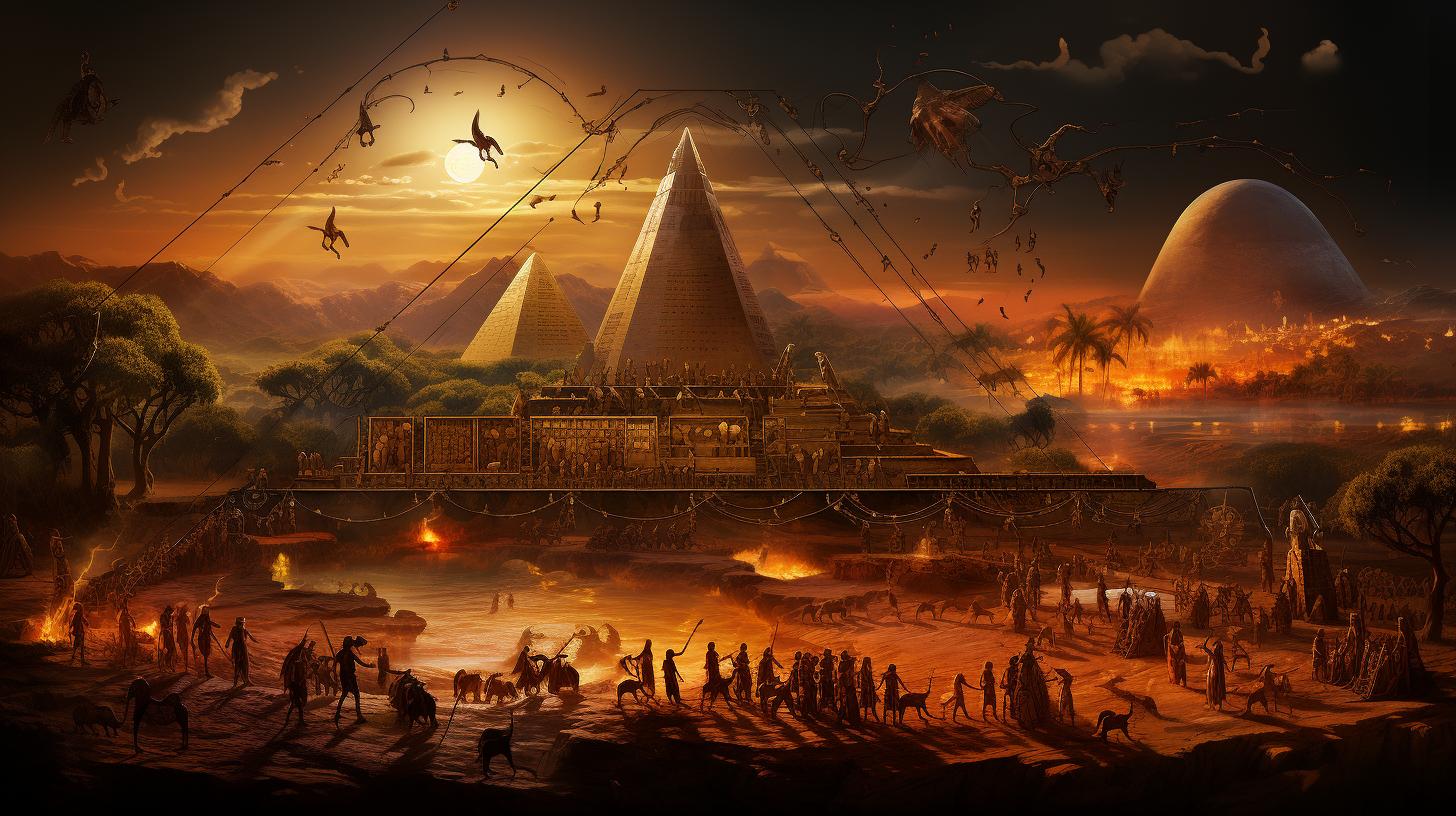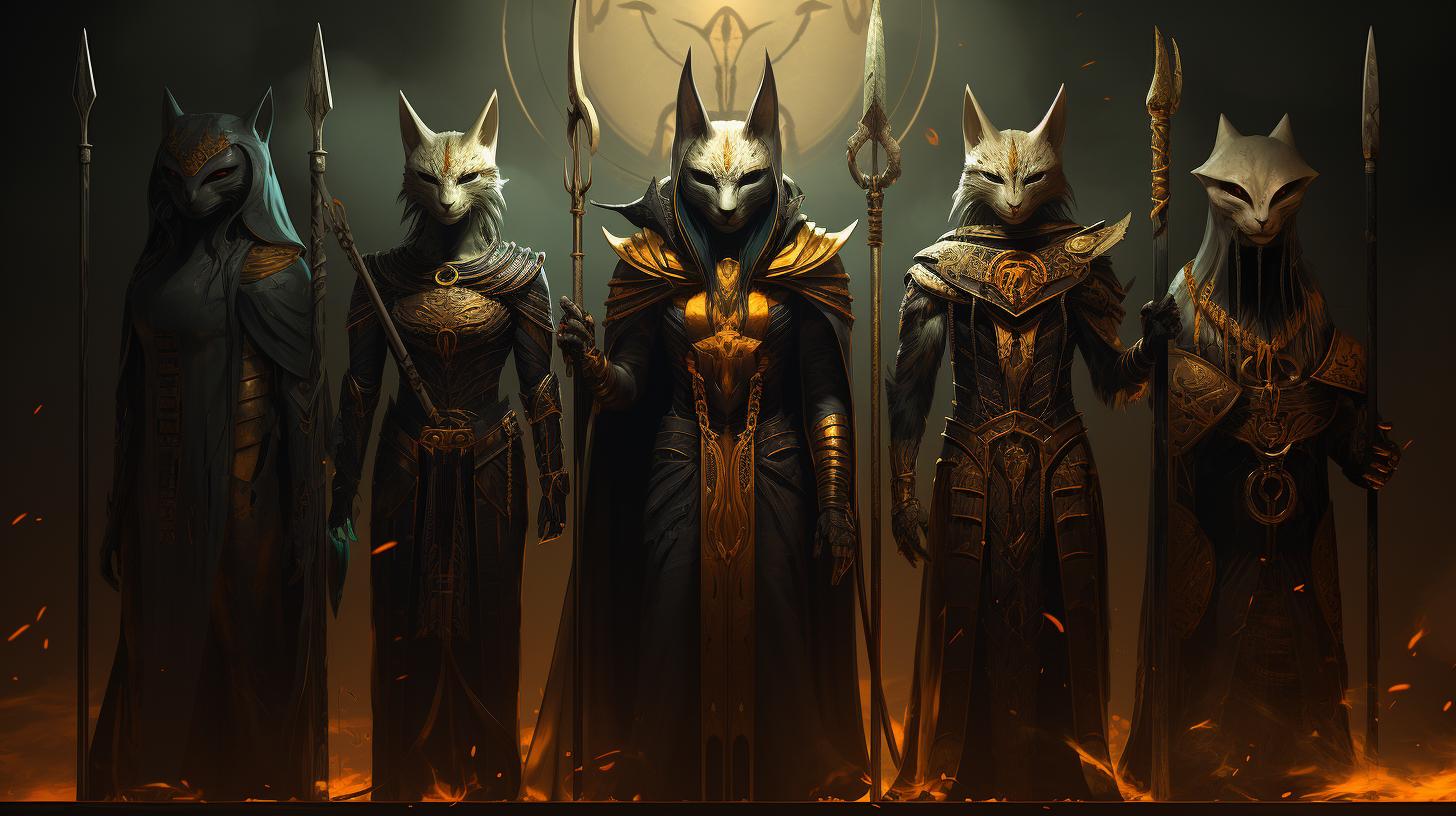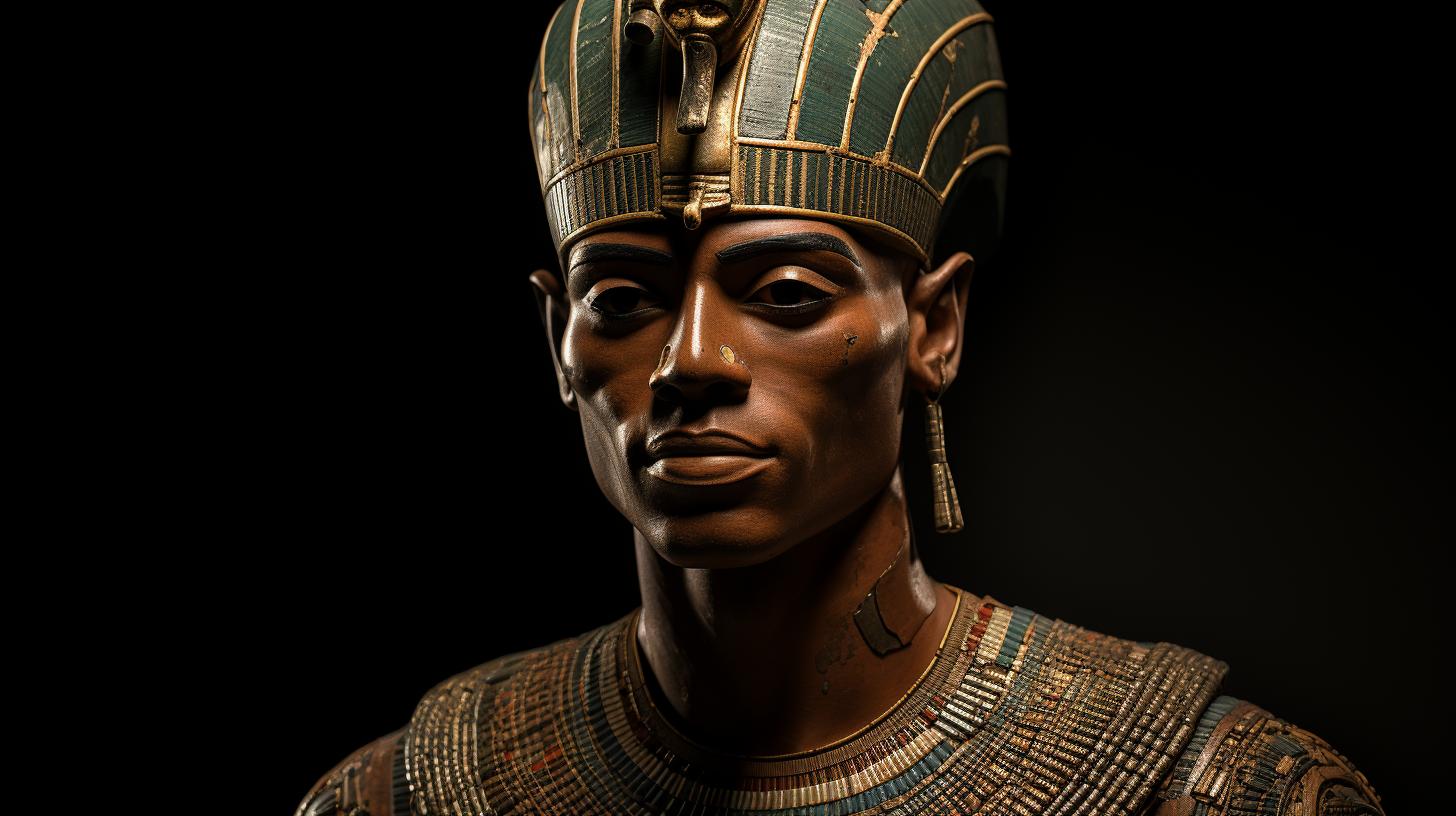Ancient Egyptian Griffin: A Fascinating Mythical Creature from Ancient Egypt
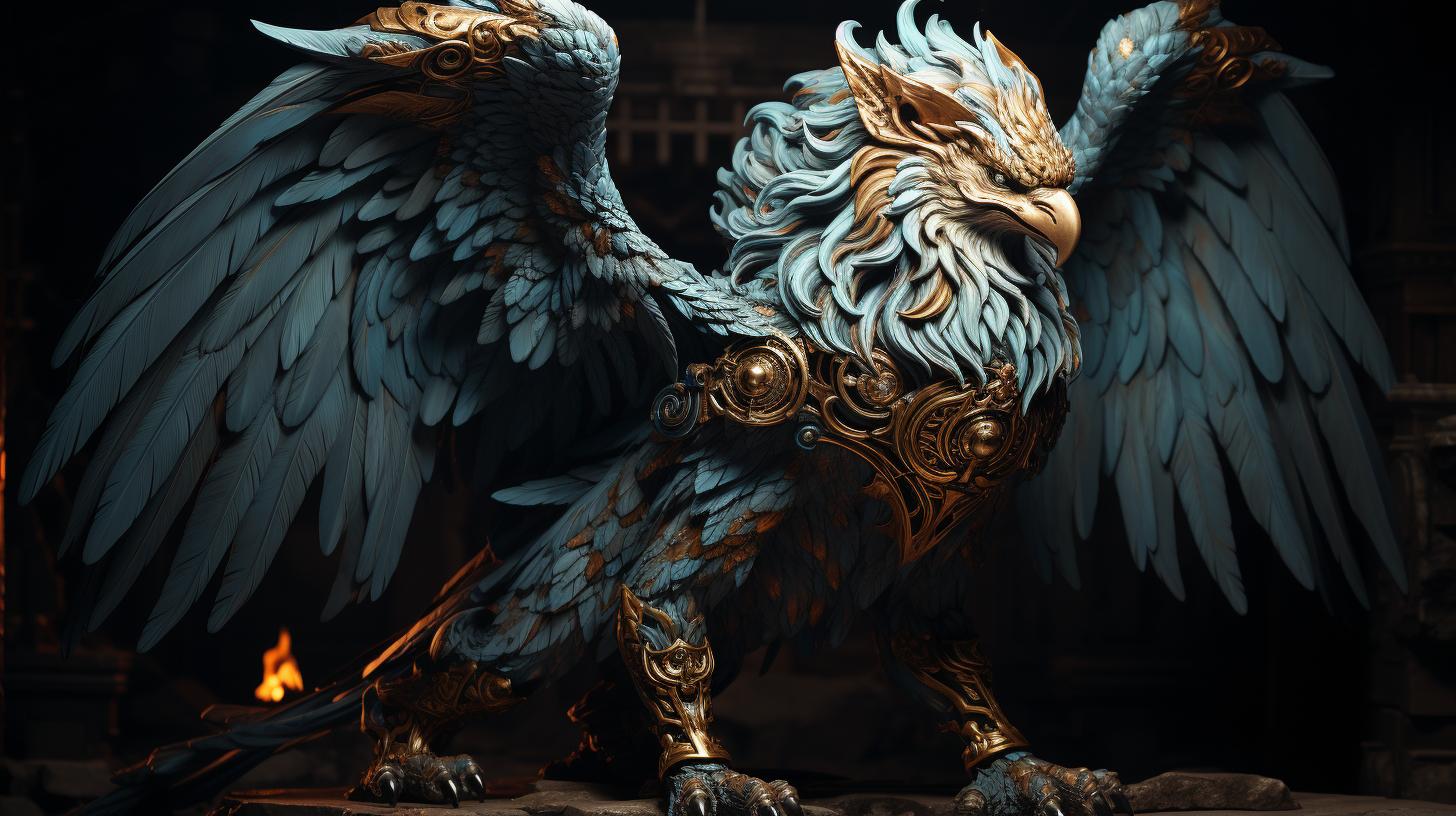
The ancient Egyptian Griffin, a legendary creature with the body of a lion and the head and wings of an eagle, holds a captivating place in mythology. In ancient Egypt, it was depicted with a falcon head, considered a form of Horus and linked to the Sphinx, symbolizing the king’s ka.
Greek mythology also embraced the Griffin as Zeus’ dogs and associated it with goddess Nemesis and god Apollo. In heraldry, it symbolizes power and nobility. Its influence continues to thrive in modern literature and popular culture.
The origins and connections of the Griffin remain debated, including speculations on ancient desert interpretations and possible links to cherubim.
Etymology
The term “Griffin” has its roots in the ancient Greek word “grȳps” or “gryps,” which refers to a creature with the body of a lion and the head and wings of an eagle.
This name is believed to have derived from the Hebrew word “kerûb,” possibly indicating a connection between cherubim and Griffins.
In the context of ancient Egyptian mythology, the Griffin was known as a composite creature with a falcon head, which was considered to be a form of the deity Horus. It is intriguing to note the resemblance between the Egyptian depiction of a Griffin and the symbol of a falcon representing the king, which reinforces the significance of this mythical creature in ancient Egyptian culture.
Furthermore, there is a suggestion that the Egyptian term “srf/sfr,” which means “Griffin,” may have influenced the interpretation of the other symbolic animal in Israelite culture as a serpent. This indicates a possible connection between these ancient civilizations and the representation of mythical creatures.
Overall, the etymology of the term “Griffin” reveals its diverse origins and linguistic influences, ranging from Hebrew to Greek and Egyptian cultures. These various linguistic connections exemplify the wide-ranging fascination with and influence of the Griffin throughout different ancient civilizations.
Egyptian Influence
The ancient Egyptian Griffin holds significant influence in the mythology and symbolism of ancient Egypt. Within Egyptian culture, the Griffin was closely associated with various aspects:
Griffin as a Symbol of Horus
One of the notable representations of the Griffin in ancient Egypt was as a symbolic form of Horus, the falcon-headed deity.
It was believed that the Griffin embodied the divine spirit of Horus, reflecting power, protection, and royal authority.
Relationship with the Sphinx
The Griffin was also connected to the Sphinx, another iconic creature in ancient Egyptian culture. It was considered an alomorph of the Sphinx, sharing similar characteristics and symbolic significance.
The Griffin represented the enigmatic and mysterious nature of the Sphinx, further adding to its mythical allure.
Representation of the Ka of the King
The Griffin held a special significance in the representation of the Ka, the soul or life force of the Egyptian king. It was believed to be a guardian and protector of the divine essence of the ruler, symbolizing strength, authority, and the majestic powers associated with the pharaoh.
The Egyptian influence on the depiction and symbolism of the Griffin is evident through its association with Horus, its connection to the Sphinx, and its representation of the Ka of the king.
These elements contribute to the deep-rooted cultural and mythological importance of the ancient Egyptian Griffin.
Greek and Roman Mythology
Greek and Roman mythology also embraced the ancient Egyptian Griffin, attributing various roles and associations to this mythical creature.
The Griffin as the Dogs of Zeus
In Greek mythology, the Griffin was often referred to as the “dogs of Zeus.” This association depicted the Griffin as a powerful and loyal guardian figure, connected to the supreme god of the Greek pantheon.
It symbolized strength, protection, and the divine authority of Zeus.
Associated with Goddess Nemesis and God Apollo
The Griffin also had connections to the Greek goddess Nemesis and the god Apollo. Nemesis, the goddess of retribution and vengeance, was often depicted alongside Griffins in Greek artworks.
It signified that justice was to be served with the fierce and watchful eyes of the Griffin. Additionally, Apollo, the god of music, prophecy, and healing, is sometimes depicted with Griffins as his companions or pulling his chariot, further emphasizing their mythological significance.
Use in Greek Architecture and Literature
The symbolism of the Griffin extended to Greek architecture, where it was widely employed as a decorative motif. Griffins adorned numerous ancient Greek temples, statues, and even coins, symbolizing power, protection, and divine favor.
These majestic creatures were also a common theme in Greek literature, appearing in various poems, plays, and mythological stories. Their presence in literary works further emphasized their significance, often embodying bravery and valor.
- Griffins in Greek architecture represented power, protection, and divine favor.
- They were widely used as decorative motifs on temples, statues, and coins.
- In Greek literature, Griffins were featured in poems, plays, and mythological stories, symbolizing bravery and valor.
The influence of the ancient Egyptian Griffin extended into the realm of Greek and Roman mythology, leaving an indelible mark on their cultural storytelling and artistic expressions.
Remember that this text is part of a larger article on the topic of ‘ancient Egyptian Griffin’ and only focuses on the section ‘4. Greek and Roman Mythology’.
Heraldic Symbolism
Heraldry has long embraced the powerful and noble image of the ancient Egyptian Griffin. Its unique characteristics have made it a favored symbol in heraldic design.
Depiction in Heraldry
The Griffin is commonly depicted in heraldry with the hindquarters of a lion, the upper body of an eagle with claws and beak, and distinctive ears. These representations often show the Griffin in an upright position, facing left, and raising one hind leg with its claws raised.
Symbolic Meaning in Heraldic Context
The Griffin’s symbolism in heraldic contexts is significant. It represents a combination of lion-like courage, strength, and royalty, along with eagle-like qualities such as keen vision and swiftness. The Griffin’s association with the animal kingdom’s king, the lion, and the avian realm’s ruler, the eagle, further enhances its symbolism of power and dominion.
In heraldic terms, the Griffin is often used to signify attributes such as bravery, vigilance, guardianship, and protection. It is a potent symbol that embodies the qualities desired by noble families and represents their noble lineage and legacy.
The Griffin’s presence in heraldry serves as a visual representation of the esteemed status and grandeur associated with ancient Egyptian culture and mythology. Its influence can still be observed in coats of arms, crests, and other heraldic designs of noble families and institutions.
Furthermore, the Griffin’s incorporation into heraldic symbolism has permeated contemporary society, as it continues to captivate and inspire artists, writers, and enthusiasts alike.
Modern Cultural Impact
The ancient Egyptian Griffin has left a lasting impact on modern culture, with its presence evident in various forms of artistic expression, literature, and popular media. It continues to captivate and inspire individuals in the present day.
References in Literature and Art
Writers and artists have drawn inspiration from the ancient Egyptian Griffin, incorporating it into their works. From Dante Alighieri’s renowned work ‘The Purgatorio’ to John Milton’s epic poem ‘Paradise Lost,’ the Griffin has played a significant role in literary creations, showcasing its enduring allure and relevance.
Furthermore, the ancient Griffin has found its place in the visual arts. Paintings, sculptures, and other artistic representations have sought to capture the essence and mystique of this mythical creature. Its unique combination of leonine and avian features allows artists to convey a sense of power, majesty, and enigma.
Popular Culture Depictions (e.g., Dungeons and Dragons)
One notable example of the ancient Egyptian Griffin’s influence on popular culture is its presence in the widely popular role-playing game Dungeons and Dragons. This game incorporates various mythological creatures, and the Griffin, with its rich history and symbolism, has become a favorite among players.
Its formidable nature and extraordinary abilities make it a captivating addition to the game’s imaginary universe.
In addition to Dungeons and Dragons, the Griffin has made appearances in other forms of entertainment such as movies, television shows, and video games.
Its distinct appearance and mythical status continue to resonate with audiences, captivating their imagination and reminding them of the ancient world.
Possible Origins and Connections
Exploring the intriguing origins and potential connections of the ancient Egyptian Griffin reveals various theories and debates. Let’s delve into these fascinating topics as we unravel the mysterious history behind this mythical creature.
Debate on Origins and Migration
There has been much debate surrounding the origins of the Griffin and its migration patterns. Some scholars propose that it may have been brought to Europe from the deserts of Mongolia via traders along the Silk Road.
This theory suggests that fossils of the Protoceratops, a dinosaur with bird-like features, could have been misinterpreted as evidence of a hybrid creature like the Griffin in the ancient desert landscapes.
Speculation on Relationship with Cherubim
Another intriguing aspect to consider is the potential connection between the Griffin and cherubim. Some argue that the Hebrew word ‘kerûb’ may be the source of the Greek term ‘griffin’, indicating a possible link.
Additionally, it is suggested that the symbolic representation of another creature in Israelite culture, commonly interpreted as a serpent, could actually be derived from the Egyptian term ‘srf/sfr’, meaning ‘griffin’.
Dinosaurs and Interpretations in Ancient Deserts
The presence of the Griffin in ancient Egyptian art and mythology raises questions about its interpretation in relation to dinosaurs and ancient desert environments.
While the precise origins are still uncertain, the association with creatures resembling dinosaurs, such as the Protoceratops, and their distinct features akin to the Griffin’s avian characteristics, adds an intriguing dimension to the exploration of its possible origins.
As we delve further into the enigmatic world of the ancient Egyptian Griffin, exploring its potential origins and connections, we uncover a web of theories and speculation that contribute to the ongoing fascination and mystery surrounding this captivating mythical creature.
.

